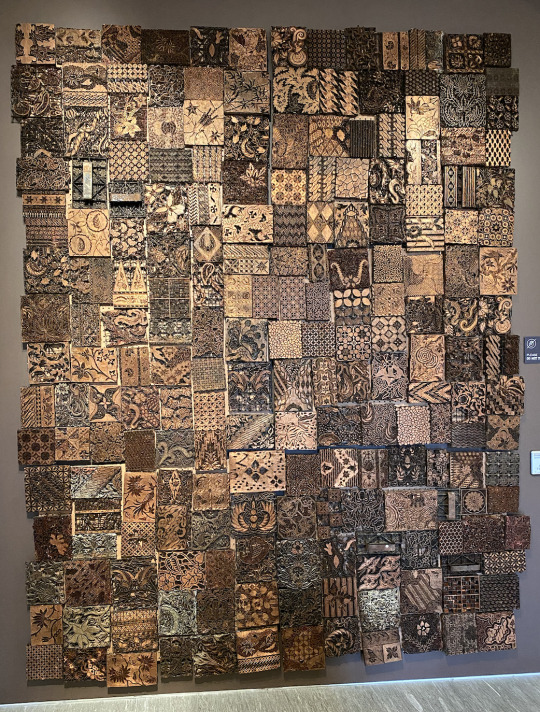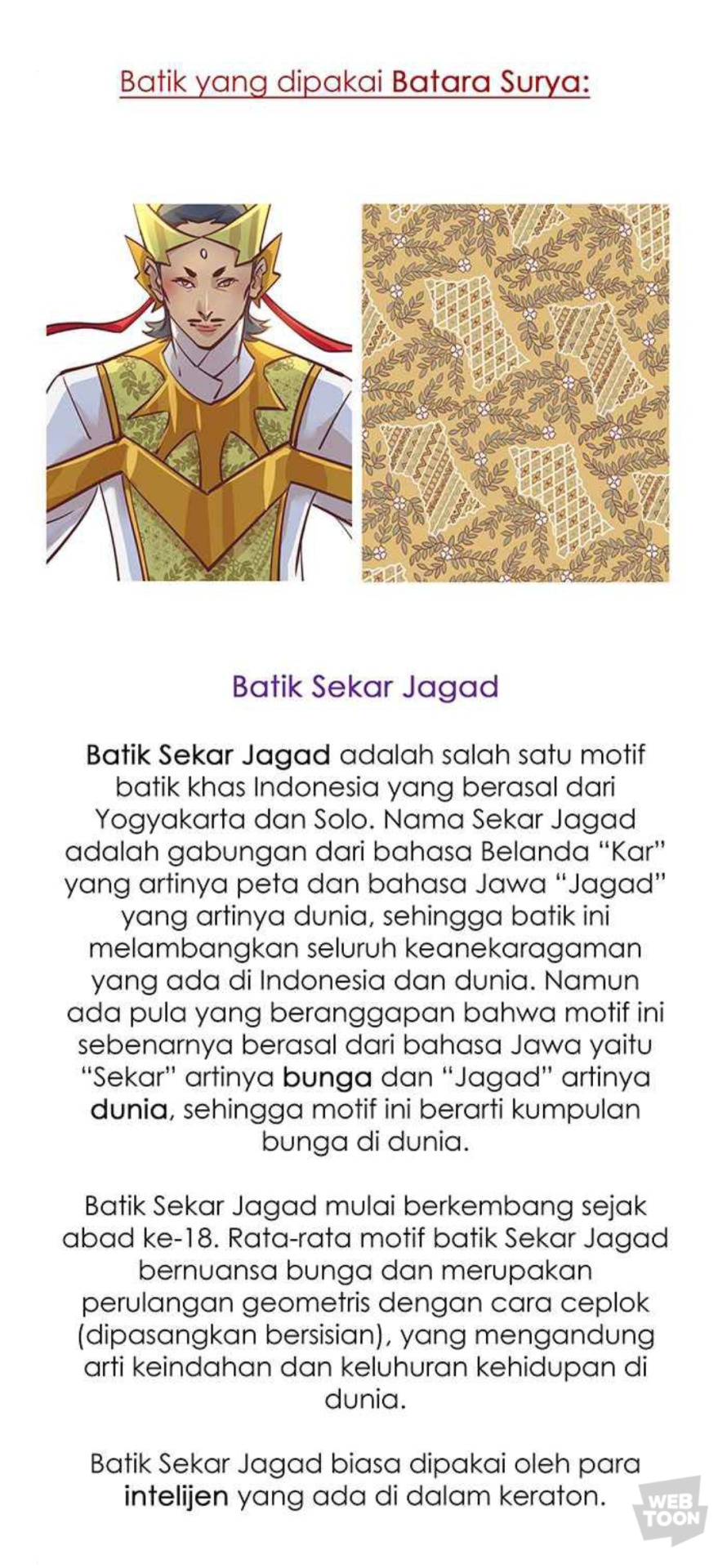#pattern printing in java
Explore tagged Tumblr posts
Text
Desafio de Impressão de Padrões em Programação
A programação oferece diversas maneiras de testar e desenvolver o raciocínio lógico, e um dos desafios mais comuns encontrados tanto em entrevistas de emprego quanto em competições de programação é o Desafio de Impressão de Padrões. Esses desafios ajudam a aprimorar a habilidade de manipular loops, controlar o fluxo de execução, e usar a saída de dados de forma eficaz. Continue reading Desafio…
0 notes
Text

Excessive silliness below the cut, but suffice it to say, my collection has hit a truly absurd degree of perfect for me.
Ok,
I recently got the last doll I ordered in (Moss), and am super excited cause she seems to perfectly fit into what was the only remaining gap in my collection. And, as the other doll I bought over the summer (Jameson) really served to pull my "main group" together, I've been feeling incredibly content with my bjds.
Things may change of course, I have a history of being a revolving door collector, but I honestly haven't felt any urge to buy new dolls at all since I ordered the last two.
Now for the fun, funny, and entirely coincidental reason my collection has reached Perfection. The Numbers. I'm terrible at math, but I love serendipitous number patterns. My absolute favorite numbers are 3, 4, 7, and 13.
- 3 each: anthro dolls, fantasy SDs, and MSDs
- 4: there's 16 in total, which makes for a perfect 4x4 grid, and there's four doll groups- anthros, fantasy SDs, modern SD+s, and MSDs
- 7 each: my main focus group is 7 (the modern SD+s), and, removing the stranger resin colors of orange and black, there are 7 dolls with fair resin and 7 with tan.
- 13: there's 13 humanoid dolls altogether!
Honestly, this group couldn't have worked out any better if I planned it, especially since hilariously serendipitous numbers coincided perfectly with my feeling wonderfully content with my crew. Super looking forward to just working on and enjoying all of them for a good while.
All dolls, in left to right top to bottom reading order.
Poesy: Doll Leaves Dreaming Jax on a modded (by u4bik) Doll Chateau B body 07, white resin.
Moss: Do Dolls Dream- Miss Marionette- Lullabye Miss Ao, woodland echo resin.
Lorne: Little Rebel Sarang, caramel resin (?), on a dyed Dollstown 18 girl body.
Remy: Seed Arts Peabody on a Spiritdoll Smart girl body, ns (?).
Kulog: modded (by seed arts) Joydoll Lai on a Dollstown old 15 boy body, dyed tan.
Jameson: OOAK 3D printed custom Meeksdoll on a *heavily* modded (by milkweed_and_honeybjds) resinsoul sd boy body, dollstown 15 hands, so many colors and copious airbrushing.
Simon: Maskcat doll mini cat doll dyed orange.
Kit: Seed Arts Peabody on a Luts Kid Delf boy body, ns (?).
Jae-Seong: K Doll Khan (full doll!), ns (?).
Harlow: Little Rebel Noelle, caramel resin, on a dyed Doll Family H 62cm boy body (version 5).
"Mouseman:" Rumple doll Morfeo, ns (?), on a dyed Doll Family H 68cm boy body (version 2).
Bruce: Cocoriang Mocka, dyed black.
Damon: Meeksdoll Labellas Emerson, rich resin.
Sascha: Seed Arts Peabody, ooak tan from artist's personal collection, on a Dollzone B45-18 boy body, tan resin.
Bronwyn: Bonelace Miss Orc "Elf Head," fair resin.
Eko: Rugged Realism Rites of Passage Geneo, java resin.
25 notes
·
View notes
Text


monday 🌷 march 18, 2024
💭 headstart, feeling accomplished, making the most of my day
my calc professor uploaded some materials for the first chapter so i started working ahead !! the quarter doesn't start until april but i'm determined to do a lot more than the bare minimum this quarter 🫡! i just received my grade for my previous math class and while it meets the grade requirement for my upcoming calc class, i definitely could have earned a much better grade if i had put in more effort.
on another note, i have been struggling with sleep recently. every night, i stay up late so that i can get some work done and it has caused me to sleep in until almost noon. i realized that this pattern is due to me not feeling accomplished during the day. if i wake up late, i spend the remaining day time just scrolling on my phone or playing games. i decided that i'll be more conscious of my daily goals by writing them down in my notebook and checking them off as i finish!
today i accomplished...
— watch (1/2) calc 2.1 videos
— print out calc intro worksheets
— revamp my notion dashboard
— check out cs java text book
next steps!
— clean my room
— fold my clothes
— wake up on time !!!!
— finish calc 2.1 materials
— start calc 2.2
— start java roadmap
#☁️ shoosiopao archive#☁️ shoosiopao studies#study#study blog#studying#studyblr#blog#personal blog#academia#academics#school#college#college student#student#school aesthetic#student life#productivity
80 notes
·
View notes
Text

Batik Printing Blocks (Tjaps) Unidentified makers (Java)
intricate copper stamps used to create patterns for wax resist printing

52 notes
·
View notes
Text
Day 4 Fashion/Pattern : Batik

taken from another webtoon which is this :
Batik is an Indonesian technique of wax-resist dyeing applied to the whole cloth. This technique originated from the island of Java, Indonesia. Batik is made either by drawing dots and lines of the resist with a spouted tool called a canting, or by printing the resist with a copper stamp called a cap.
Also here the collection of the batik after this, from my OC Princess Wreksa from Batik kingdom! Batik kingdom is island-based kingdom that colorful in every aspects



14 notes
·
View notes
Text
Morning python study log 03-11-2023
So these days I have started to stream my code study.
So today morning I learnt:
How to take absolute value. Found some anomaly in the system lol. Basically it was not taking abs() but fabs() however my python was the latest version
I studied how to sort three numbers in python, although I have done this in other language since the syntax of python is still foreign to me I had difficulty sorting them in ascending order and also descending order using the built in function sorted() and also making my own implementation
I understood what is range function and how to use it with for loops, had a bit of hit and miss while understanding how it really worked but google's bard helped, I also learnt about reverse sorting
I learnt what is interning while trying to understand the difference between identity operators and equality operators. Found some anomaly in my system again, that my computer's range of interning is much larger than what is documented ?
I learnt what is keyword argument when with using reverse built in sort, yeah so I was amazed that the order of arguments didn't mattered for keyword argument.
I was also confusing syntax of python with javascript since that is what is what recently code in.
Learnt about what does len() function does, like properly rather than just guessing about what it does.
understood about control statements such as if, else and elif
learnt about break and continue in loops in python which is same as java script.
learnt about how to check the divisibility of a number. I didn't knew that it was separate topic in my syllabus I just thought it was something people would knew.
Learnt the basics about on how to make a READ , EVAL PRINT LOOP, REPL
Learnt about stupid pattern program in python, I don't know why the heck they still teach these things and put it in syllabus. There is no real world use of it as far as I can see. I still have to post the notes about it in my blogs and store it my cloud drive.
Learnt how to do a summation of series, using and not using numpy.
figured out how to do a factorial of a number
was trying to make an short algorithm on how to do the fibonacci series but well, I was so sleepy that my mind didn't worked as it should, I took the hint from bard then felt bad that I was directly looking at the solution when rather I should sleep and approach the problem from afresh in next study stream. So stopped my study stream.
youtube
#programmer#studyblr#learning to code#python#coding#progblr#codeblr#programming#code log#study log#studying#Youtube
9 notes
·
View notes
Text
📷 What’s set as your phone’s lockscreen? too lazy to ss but its a pompompurin collage
🍫 Cheese or chocolate? chocolate
✨ Do you have any nicknames? uhhh my brother calls me rox? but not really
🎵 Last song you listened to? dirty girl from nerdy prudes must die LMAO
✏️ Have you ever written fanfiction? yeah
😏 Are you on discord? yeah
💛 Do you have any piercings? just the basic ear ones
🐰 What do you think says the most about a person? uhh i mean like psychologically their mannerisms and speech patterns <- guy who has been watching lots of criminal minds
🍪 If you were a cookie, what kind would you be? m&m cookie
🐶 Are you more of a dog person or a cat person? dog person im allergic to cats lol
🎧 Headphones or earbuds? headphones
🌼 What’s the last thing you said out loud? uhhh i think it was me telling my mom to change a setting in her phone
🙃 What’s a weird fact that you know? a person doesnt die immediately once decapitated it takes a couple minutes
🦉 Are you a morning person or a night owl? night owl
🧸 Favorite place to nap? i dont nap
🏳️🌈 Are you a member of the LGBTQIA+ community? yeah
🦋 Describe yourself in three words. mansplain manipulate malewife
👖 Jeans or sweatpants? jeans
🥤 What’s your go-to Starbucks order? i dont go to starbucks anymore but when i did java chip frap
🧡 A color you can’t stand? really bright neon teal
💎 What’s your most prized possession? probs my 1k+ issue comic collection lol
☕ Coffee or tea? coffee
🦖 Favorite extinct animal? stellars sea cow
🌙 How long have you been on tumblr? this blog? little over two years. in general? too long to count
🌴 Desert island item? a phone with service easy
🐸 Describe your aesthetic. grungy cryptidcore
🔮 What’s your dream job? journalist at vogue italia
💙 Relationship status? TAKENNNN <3 (aether ily ily ily il-)
🌿 Describe your favorite outfit. my only god can judge me ajj shirt
🎤 Is there a song you know all the lyrics to? theres like 100 songs i know all the lyrics to
🤎 What color is your hair? brown (auburn technically) with green bangs
💌 Do you talk to yourself? yeah
💄 Do you wear makeup? no
🌸 Best compliment you ever received? uhh probs when my editor in chief told me im the future of the paw print (our newspaper)
💞 @ultra-raging-ghost and anyone else who wants to join
~ 💖 ASK GAME 💖 ~
📷 What’s set as your phone’s lockscreen?
🍫 Cheese or chocolate?
✨ Do you have any nicknames?
🎵 Last song you listened to?
✏️ Have you ever written fanfiction?
😏 Are you on discord?
💛 Do you have any piercings?
🐰 What do you think says the most about a person?
🍪 If you were a cookie, what kind would you be?
🐶 Are you more of a dog person or a cat person?
🎧 Headphones or earbuds?
🌼 What’s the last thing you said out loud?
🙃 What’s a weird fact that you know?
🦉 Are you a morning person or a night owl?
🧸 Favorite place to nap?
🏳️🌈 Are you a member of the LGBTQIA+ community?
🦋 Describe yourself in three words.
👖 Jeans or sweatpants?
🥤 What’s your go-to Starbucks order?
🧡 A color you can’t stand?
💎 What’s your most prized possession?
☕ Coffee or tea?
🦖 Favorite extinct animal?
🌙 How long have you been on tumblr?
🌴 Desert island item?
🐸 Describe your aesthetic.
🔮 What’s your dream job?
💙 Relationship status?
🌿 Describe your favorite outfit.
🎤 Is there a song you know all the lyrics to?
🤎 What color is your hair?
💌 Do you talk to yourself?
💄 Do you wear makeup?
🌸 Best compliment you ever received?
💞 @ your favorite blog.
Reblogs are appreciated!
44K notes
·
View notes
Text
Why Hire a Clojure Developer? Key Benefits of Using Clojure for Your Next Project

For a web or enterprise application, Clojure may not be the first language that springs to mind. However, it's a strong option for projects that demand simplicity, scalability, and great performance. Hiring Clojure engineers is becoming increasingly popular as more tech businesses look for code that is concurrent, tidy, and maintainable.
Clojure, which is based on the Java Virtual Machine (JVM), combines the flexibility and brevity of a contemporary Lisp with the strength and reliability of Java. Clojure might be just what you need if you are developing a new reactive application, data processing system, or backend.
Modern Performance, Functional Reliability, and Simplicity in One Elegant Language
Clojure is a dynamic, functional language that prioritizes concurrency, simplicity, and immutability. Clojure, in contrast to conventional object-oriented languages, enables programmers to create reliable systems with less complexity and fewer side effects.
Hiring Clojure developers gives you access to a philosophy that prioritizes dependable logic, clear abstractions, and performance under pressure. Clojure's emphasis on pure functions and immutable data structures results in fewer errors and simpler testing.
Top Reasons to Use Clojure in Your Next Project
Immutable by default
Code that is immutable is more predictable. Writing functions that don't change state is encouraged by Clojure, which lowers problems and facilitates debugging and scaling applications.
Seamless Java interoperability
Clojure has complete access to Java libraries and operates on the JVM. This implies that you can write new logic in a more expressive language while utilizing pre-existing Java code.
Concurrency simplified
Concurrency was considered in the design of Clojure. Developers can construct concurrent code without the drawbacks of conventional multithreading by utilizing built-in features such as software transactional memory and agents.
REPL-Driven development
The REPL (Read-Eval-Print Loop) is a tool used by Clojure developers for interactive code writing and testing. Faster feedback loops and more fruitful development sessions are the outcomes of this.
These characteristics are strategic advantages for software organizations that prioritize agility and long-term maintainability.
Finding and Hiring the Right Developer
Hiring Clojure developers with practical experience and a solid foundation in functional programming is crucial because Clojure is a more specialized language than other languages.
They ought to feel at ease collaborating with:
The environment of JVM
Patterns of function and recursion
Frameworks for websites such as Luminus
Data libraries such as ClojureScript (for frontend) or core.async
Be ready to hire remote talent because many highly qualified Clojure professionals prefer working remotely. This broadens your search to include engineers from around the globe who are used to working asynchronously and are frequently involved in open-source groups.
Use an IT Staffing Agency to Simplify the Search
It can be challenging to locate Clojure talent on conventional job boards. Reaching pre-screened developers with the necessary experience might be facilitated by collaborating with an IT staffing agency.
In addition to streamlining the employment process, agencies guarantee that technical proficiency, communication requirements, and cultural fit are fulfilled. This can significantly shorten time-to-hire and boost long-term placement success rates for expanding IT organizations.
Final Thoughts
Clojure is a strategic choice for contemporary, scalable, and maintainable applications; it’s not only a specialized language. Hiring experienced Clojure developers will result in agile development, cleaner code, and long-term dependability.
Clojure provides a sophisticated and practical answer to challenging problems for tech companies willing to look outside the box.
0 notes
Text
Most useable core Creational Design Patterns in Java(Singleton & Prototype)

Explore how Singleton and Prototype patterns streamline Java applications by enhancing performance, reuse, and maintainability in real-world scenarios.
Design patterns are tried-and-tested solutions to common software design problems. In Java, they help developers write clean, reusable, and scalable code. This post focuses on two creational design patterns: 1. Singleton Design Pattern 2. Prototype Design Pattern
1. Singleton Design Pattern: The Singleton pattern ensures a class has only one instance and provides a global point of access to it.
Why Use It: Use Singleton when you want exactly one object to coordinate actions across the system. It’s perfect for things like: Configuration settings Database connections Thread pools Logging Caches
Java Implementation (Thread-Safe Singleton): public class ConfigManager { private static volatile ConfigManager instance;
private ConfigManager() { // private constructor }
public static ConfigManager getInstance() { if (instance == null) { synchronized (ConfigManager.class) { if (instance == null) { instance = new ConfigManager(); } } } return instance; }
public void printConfig() { System.out.println(“App config data…”); } }
Database Connection Manager: import java.sql.Connection; import java.sql.DriverManager; import java.sql.SQLException;
public class DatabaseConnectionManager { private static volatile DatabaseConnectionManager instance; private Connection connection; private static final String URL = “jdbc:mysql://localhost:3306/app_db”; private static final String USER = “root”; private static final String PASSWORD = “password”;
private DatabaseConnectionManager() { try { this.connection = DriverManager.getConnection(URL, USER, PASSWORD); } catch (SQLException e) { throw new RuntimeException(“Failed to connect to DB”, e); } }
public static DatabaseConnectionManager getInstance() { if (instance == null) { synchronized (DatabaseConnectionManager.class) { if (instance == null) { instance = new DatabaseConnectionManager(); } } } return instance; }
public Connection getConnection() { return connection; } }
public class UserService { public void getUserData() { try { Connection conn = DatabaseConnectionManager.getInstance().getConnection(); // Use the connection for a query (using Statement, PreparedStatement, etc.) } catch (Exception e) { e.printStackTrace(); } } }
2. Prototype Design Pattern: The Prototype pattern lets you clone existing objects instead of creating new ones from scratch. It’s especially useful when object creation is expensive (e.g., loading from DB, complex setup).
Why Use It: When object construction is costly. When you need many similar objects with slight variations. When you want to avoid subclassing Document Template System: Building an enterprise app that generates business reports (invoices, summaries, charts). Each report starts from a base template, but the content is customized per user or client.
Instead of recreating everything from scratch, we clone a base report object and make changes.
public class ReportTemplate implements Cloneable { private String title; private String content; private String footer;
public ReportTemplate(String title, String content, String footer) { this.title = title; this.content = content; this.footer = footer; }
public void setContent(String content) { this.content = content; }
public void print() { System.out.println(“=== “ + title + “ ===”); System.out.println(content); System.out.println(“ — — “ + footer + “ — -”); }
@Override public ReportTemplate clone() { try { return (ReportTemplate) super.clone(); } catch (CloneNotSupportedException e) { throw new RuntimeException(“Failed to clone ReportTemplate”, e); } } }
public class Main { public static void main(String[] args) { // Base template ReportTemplate monthlyReport = new ReportTemplate( “Monthly Report”, “This is a placeholder content.”, “Confidential” );
// Clone for Client A ReportTemplate clientAReport = monthlyReport.clone(); clientAReport.setContent(“Revenue: $10,000\nProfit: $2,500”);
// Clone for Client B ReportTemplate clientBReport = monthlyReport.clone(); clientBReport.setContent(“Revenue: $12,000\nProfit: $3,000”);
// Display both clientAReport.print(); clientBReport.print(); } }
When to Use What: Use Case Singleton Prototype One shared instance needed ✅ ❌ Performance matters in object creation ❌ ✅ Slight variations of the same object ❌ ✅ Global access point required ✅ ❌
Test yourself on what you’ve learned above, and compare your answers with the correct ones provided below.
Q1. What is the main purpose of the Singleton pattern? A. Ensure multiple instances of a class B. Allow cloning of objects C. Ensure only one instance of a class D. Avoid subclassing
Please visit our website to know more:-https://cyberinfomines.com/blog-details/most-useable-core-creational-design-patterns-in-java%28singleton-&-prototype%29
0 notes
Text
Price: [price_with_discount] (as of [price_update_date] - Details) [ad_1] Master Java Design Patterns with Confidence! This comprehensive eBook is your ultimate guide to mastering design patterns through an extensive collection of Multiple-Choice Questions (MCQs) designed for real-world success.Whether you're a student prepping for exams, a developer aiming to ace technical interviews, or a professional building scalable applications, this book has you covered. Dive into hundreds of carefully crafted MCQs covering Creational, Structural, and Behavioral patterns—Singleton, Factory, Adapter, Observer, and more. What sets this book apart? Every question comes with a detailed explanation and complete solution, breaking down complex concepts into clear, practical insights. Learn why a pattern works, how to apply it, and how to avoid common pitfalls, all while building expertise that translates directly to real-world coding challenges.Why Choose This Book?Extensive MCQs: Test and sharpen your knowledge with a wide range of questions.Diverse Question Types: Master patterns through concept-based, code-based, and scenario-based MCQs for a well-rounded learning experience.In-Depth Explanations: Gain a deep understanding of each pattern’s purpose and application.Real-World Focus: Learn to solve problems like a pro with patterns used in modern software development.Perfect for All Levels: From beginners to seasoned coders, grow your skills at your own pace.Get ready to code smarter, not harder. Whether you’re chasing certifications, career growth, or cleaner code, Java Design Patterns for Real-World Expertise is your key to unlocking mastery. Grab your copy now and start building solutions that stand out!Add to your book today and take the first step toward Java design pattern excellence! ASIN : B0F4Y467PL Language : English File size : 1.2 MB Text-to-Speech : Enabled Screen Reader : Supported Enhanced typesetting : Enabled X-Ray : Not Enabled Word Wise : Not Enabled Print length : 555 pages [ad_2]
0 notes
Text
Data Mining Fundamentals

Data mining is a powerful analytical process that helps organizations transform raw data into useful information. It involves discovering patterns, correlations, and trends in large datasets, enabling data-driven decision-making. In this post, we’ll explore the fundamentals of data mining, its techniques, applications, and best practices for effective data analysis.
What is Data Mining?
Data mining is the practice of examining large datasets to extract meaningful patterns and insights. It combines techniques from statistics, machine learning, and database systems to identify relationships within the data and predict future outcomes.
Key Concepts in Data Mining
Data Preparation: Cleaning, transforming, and organizing data to make it suitable for analysis.
Pattern Recognition: Identifying trends, associations, and anomalies in data.
Model Building: Creating predictive models using algorithms to forecast future events.
Evaluation: Assessing the accuracy and effectiveness of the models and insights gained.
Common Data Mining Techniques
Classification: Assigning items in a dataset to target categories (e.g., spam detection).
Regression: Predicting a continuous value based on input features (e.g., sales forecasting).
Clustering: Grouping similar data points together based on features (e.g., customer segmentation).
Association Rule Learning: Finding relationships between variables in large datasets (e.g., market basket analysis).
Anomaly Detection: Identifying unusual data points that do not conform to expected patterns (e.g., fraud detection).
Popular Tools and Libraries for Data Mining
Pandas: A powerful data manipulation library in Python for data preparation and analysis.
Scikit-learn: A machine learning library in Python that provides tools for classification, regression, and clustering.
R: A language and environment for statistical computing and graphics with packages like `caret` and `randomForest`.
Weka: A collection of machine learning algorithms for data mining tasks in Java.
RapidMiner: A data science platform that offers data mining and machine learning functionalities with a user-friendly interface.
Example: Basic Data Mining with Python and Scikit-learn
import pandas as pd from sklearn.model_selection import train_test_split from sklearn.ensemble import RandomForestClassifier from sklearn.metrics import accuracy_score # Load dataset data = pd.read_csv('data.csv') # Prepare data X = data.drop('target', axis=1) # Features y = data['target'] # Target variable # Split dataset X_train, X_test, y_train, y_test = train_test_split(X, y, test_size=0.2, random_state=42) # Train model model = RandomForestClassifier() model.fit(X_train, y_train) # Make predictions predictions = model.predict(X_test) # Evaluate accuracy accuracy = accuracy_score(y_test, predictions) print("Model Accuracy:", accuracy)
Applications of Data Mining
Marketing: Understanding customer behavior and preferences for targeted campaigns.
Finance: Risk assessment and fraud detection in transactions.
Healthcare: Predicting patient outcomes and identifying treatment patterns.
Retail: Inventory management and demand forecasting.
Telecommunications: Churn prediction and network optimization.
Best Practices for Data Mining
Understand your data thoroughly before applying mining techniques.
Clean and preprocess data to ensure high-quality inputs for analysis.
Choose the right algorithms based on the specific problem you are trying to solve.
Validate and test your models to avoid overfitting and ensure generalization.
Continuously monitor and update models with new data to maintain accuracy.
Conclusion
Data mining is a powerful tool that enables businesses to make informed decisions based on insights extracted from large datasets. By understanding the fundamentals, techniques, and best practices, you can effectively leverage data mining to enhance operations, improve customer experiences, and drive growth. Start exploring data mining today and unlock the potential hidden within your data!
0 notes
Text
Pattern programs in Java are exercises that involve printing various shapes and designs using loops and conditional statements. These programs help developers enhance their logical thinking and problem-solving skills. Common patterns include triangles, squares, and diamond shapes, often created through nested loops, showcasing the versatility of Java in graphical output. Check here to learn more.
0 notes
Text
Drying batik cloth after washing.
Drying batik cloth after washing.
background, art, fabric, design, ornament, illustration, batik, fashion, textile, abstract, indonesia, pattern, wallpaper, decoration, vintage, style, retro, indonesian, print, vector, traditional, decorative, graphic, decor, floral, beautiful, flower, seamless, texture, batik indonesia, element, culture, summer, artistic, geometric, backdrop, creative, shape, sketch, paisley, javanese, asia, floral pattern, ethnic, elegant, patchwork, repeat, oriental, ornate, java
1 note
·
View note
Text
What is Programming? A comprehensive guide
Programming : Programming is the process of designing and building instructions that computers can execute to perform specific tasks or solve particular problems. It involves writing, testing, debugging, and maintaining sets of instructions, known as code, using a programming language. These instructions tell the computer what actions to take, how to perform them, and in what order.
Here’s a comprehensive guide to programming:
Understanding Programming Languages:
Programming languages are formal languages with a set of rules and syntax used to write computer programs.
There are numerous programming languages, each with its own syntax, semantics, and use cases.
Examples include Python, Java, JavaScript, C++, Ruby, and many more.
Basic Concepts:
Variables: Symbols that represent data stored in computer memory.
Data Types: Categories that classify data, such as integers, floating-point numbers, strings, and arrays.
Operators: Symbols used to perform operations on data, like addition, subtraction, comparison, etc.
Control Structures: Constructs for controlling the flow of execution in a program, such as loops and conditionals.
Writing Code:
Start with defining the problem you want to solve or the task you want to accomplish.
Break down the problem into smaller, more manageable steps.
Write code to implement each step, using appropriate data structures and algorithms.
Ensure that your code is clear, concise, and well-organized to make it easier to understand and maintain.
Testing and Debugging:
Testing involves running your program with various inputs to verify that it produces the expected outputs.
Debugging is the process of identifying and fixing errors or bugs in your code.
Techniques include using debugging tools, print statements, and code review.
Software Development Life Cycle (SDLC):

SDLC is a framework that outlines the stages involved in developing software, including planning, analysis, design, implementation, testing, deployment, and maintenance.
Each stage has its own set of activities and goals to ensure the successful development and delivery of software products.
Version Control:
Version control systems like Git help track changes to code, collaborate with others, and manage different versions of a project.
They enable developers to work on the same codebase simultaneously, merge changes, and revert to previous versions if needed.
Advanced Topics:
Object-Oriented Programming (OOP): A programming paradigm based on the concept of “objects” that encapsulate data and behavior.
Functional Programming: A programming paradigm focused on the evaluation of mathematical functions and immutable data.
Algorithms and Data Structures: Techniques for organizing and processing data efficiently, crucial for writing efficient code.
Design Patterns: Reusable solutions to common problems encountered in software design.
Web Development: Building web applications using technologies like HTML, CSS, JavaScript, and frameworks like React, Angular, or Vue.js.
Continuous Learning:
Programming is a rapidly evolving field, so continuous learning is essential to stay updated with new languages, tools, and best practices.
Resources for learning include online tutorials, books, courses, coding bootcamps, and participating in coding communities and forums.
Ethical Considerations:
As a programmer, it’s important to consider the ethical implications of the software you develop.
Respect user privacy, security, and accessibility.
Avoid biases in algorithms and ensure fairness and transparency in your code.
Building Projects:
Practice is key to mastering programming. Start with small projects and gradually tackle more complex ones.
Building projects allows you to apply what you’ve learned, experiment with different technologies, and showcase your skills to potential employers or collaborators.
Programming is a valuable skill with diverse applications across various industries, from software dev
1 note
·
View note
Link
0 notes
Text
Price: [price_with_discount] (as of [price_update_date] - Details) [ad_1] As Python continues to grow in popularity, projects are becoming larger and more complex. Many Python developers are taking an interest in high-level software design patterns such as hexagonal/clean architecture, event-driven architecture, and the strategic patterns prescribed by domain-driven design (DDD). But translating those patterns into Python isn’t always straightforward. With this hands-on guide, Harry Percival and Bob Gregory from MADE.com introduce proven architectural design patterns to help Python developers manage application complexity—and get the most value out of their test suites. Each pattern is illustrated with concrete examples in beautiful, idiomatic Python, avoiding some of the verbosity of Java and C# syntax. Patterns include:Dependency inversion and its links to ports and adapters (hexagonal/clean architecture)Domain-driven design’s distinction between Entities, Value Objects, and Aggregates Repository and Unit of Work patterns for persistent storageEvents, commands, and the message busCommand-query responsibility segregation (CQRS)Event-driven architecture and reactive microservices ASIN : B085KB31X3 Publisher : O'Reilly Media; 1st edition (5 March 2020) Language : English File size : 12025 KB Simultaneous device usage : Unlimited Text-to-Speech : Enabled Enhanced typesetting : Enabled X-Ray : Not Enabled Word Wise : Not Enabled Print length : 507 pages [ad_2]
0 notes